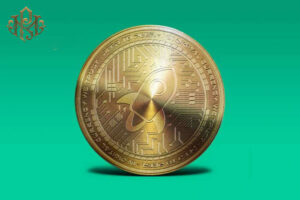
Close



In the field of cryptocurrencies, Stellar Lumens (XLM) stands as a beacon of innovation and promises to revolutionize the way we trade, exchange value and access financial services. Born from the desire to create a more inclusive and efficient global financial system, Stellar has evolved into a leading blockchain platform with a focus on interoperability, scalability and accessibility. This article aims to provide a comprehensive exploration of Stellar, examining its history, technology, features, uses, benefits, challenges, and its impact on the future of digital finance.
The Stellar story begins in 2014 when Jed McCaleb, a leading figure in the cryptocurrency space and co-founder of Ripple Labs, decided to create a new decentralized payment network with a focus on financial inclusion. McCaleb’s vision was to use blockchain technology to facilitate cross-border transactions, remittances and micropayments, especially in underserved areas of the world.
Stellar was officially launched in July 2014 as an open source protocol for exchanging digital assets and fiat currencies. The project was originally based on the Ripple protocol, but made significant changes to address scalability, decentralization, and usability concerns. Stellar’s native cryptocurrency, Lumens (XLM), serves as fuel for the network, facilitating transactions and providing access to various platform features.
The Stellar Development Foundation, a non-profit organization based in San Francisco, was established to oversee the development and enhancement of the Stellar protocol. SDF’s mission is to promote financial access and inclusion using blockchain technology to create fair and sustainable financial systems.

Stellar has several innovative features that set it apart from other blockchain platforms:
Consensus Protocol: Stellar uses a unique consensus protocol called the Stellar Consensus Protocol that enables decentralized agreement between network participants. SCP is designed to be more energy-efficient and scalable than traditional proof-of-work consensus mechanisms, enabling high-throughput transaction processing and low-latency confirmation times.
Anchors and Issuing Assets: Stellar allows users to create and issue digital assets, including fiat currencies, cryptocurrencies, and tokenized assets, through entities called anchors. Anchors act as a bridge between the Stellar network and traditional financial systems, facilitating the seamless exchange of digital and fiat currencies.
Decentralized exchange: Stellar has a built-in decentralized exchange that enables peer-to-peer trading of digital assets directly on the blockchain. Users can trade Lumens (XLM) and other assets without relying on centralized exchanges, reducing counterparty risk and improving liquidity.
Smart Contracts: Stellar supports the creation and execution of smart contracts and enables programmable and self-executing agreements between parties. Smart contracts in Stellar are written in a language called Stellar’s Transaction Language (STL), which simplifies the process of creating complex transaction logic.
Stellar has a wide range of potential use cases in different industries and sectors:
Cross-border payments: Stellar is well-suited to facilitate cross-border payments, remittances and money transfers, especially in areas with limited access to traditional banking services. The platform’s low transaction fees, fast settlement times and interoperability make it an attractive option for individuals and businesses looking to send and receive payments globally.
Tokenization: Stellar enables the tokenization of real-world assets, such as fixed currencies, commodities, real estate, and securities, by issuing digital tokens on the blockchain. These tokenized assets can be easily traded, transferred and distributed, opening up new opportunities for liquidity, access and investment diversification.
Micropayments and microloans: Stellar facilitates micropayments and microloans by enabling low-cost, near-instant transactions between individuals and businesses. This opens up new avenues for financial inclusion and economic empowerment, especially for disadvantaged populations without access to traditional banking services.
Remittances and Financial Inclusion: Stellar has the potential to revolutionize remittance markets by providing a more cost-effective and efficient alternative to traditional remittance channels. Using blockchain technology, Stellar reduces the cost and complexity of cross-border transactions, making financial services more accessible and affordable for people in emerging markets.

Stellar offers several advantages over traditional financial systems and other blockchain platforms:
Scalability and throughput: The Stellar consensus protocol enables high-speed transaction processing with the capacity to handle thousands of transactions per second. This scalability is essential to support widespread adoption and accommodate the growing demands of a global user base.
Low transaction fees: Stellar’s low transaction fees make it an attractive option for microtransactions and low-value payments, as users can send and receive funds without incurring significant fees. This affordability increases the accessibility and usability of the platform, especially for people in disadvantaged areas.
Interoperability: Stellar’s interoperability enables seamless integration with existing financial systems and blockchain networks, enabling frictionless exchange of digital assets and fiat currencies. This interoperability expands the utility and versatility of Stellar and opens up new opportunities for collaboration and innovation across industries.
Community Governance: Stellar’s decentralized governance model promotes community engagement and participation in decision-making processes and ensures that the platform is responsive to users’ needs and preferences. This inclusiveness fosters transparency, trust and collaboration in the Stellar ecosystem.
Despite its many advantages, Stellar also faces several challenges and considerations:
Competition: The cryptocurrency and blockchain space is highly competitive, with numerous projects competing for market share and user adoption. Stellar competes with established cryptocurrencies such as Bitcoin and Ethereum, as well as emerging platforms and protocols that seek to innovate in the decentralized finance space.
Regulatory Uncertainty: Like many cryptocurrencies, Stellar operates in a regulatory gray area, with unclear legal and regulatory frameworks governing its use and acceptance. Regulatory uncertainty can hinder mainstream adoption and investment, as businesses and individuals may be hesitant to engage with the technology due to compliance concerns.
Education and Awareness: Stellar may face challenges in terms of education and awareness, as many individuals and businesses are still unfamiliar with blockchain technology and its potential applications. Educating users and developers on the benefits and capabilities of Stellar will be critical to adoption and building a vibrant ecosystem.
Security and Privacy: Stellar’s security and privacy features may be subject to scrutiny as the platform grows and attracts more attention from regulators and malicious actors. Ensuring strong security measures and privacy-enhancing features are essential to maintaining trust and confidence in the Stellar ecosystem.
In conclusion, Stellar Lumens (XLM) represents an important milestone in the evolution of digital finance, providing a scalable, interoperable and inclusive platform for exchanging value and accessing financial services. With its innovative features, use cases and community-driven governance model, Stellar has the potential to transform the way we transact, collaborate and interact in the digital age.
As the Stellar ecosystem continues to evolve and expand, it will be fascinating to see how this groundbreaking blockchain platform changes the global financial landscape and empowers individuals and communities around the world. With a steadfast commitment to financial access and inclusion, Stellar is poised to usher in a new era of decentralized finance, where anyone, anywhere can participate in the digital economy and achieve economic empowerment.